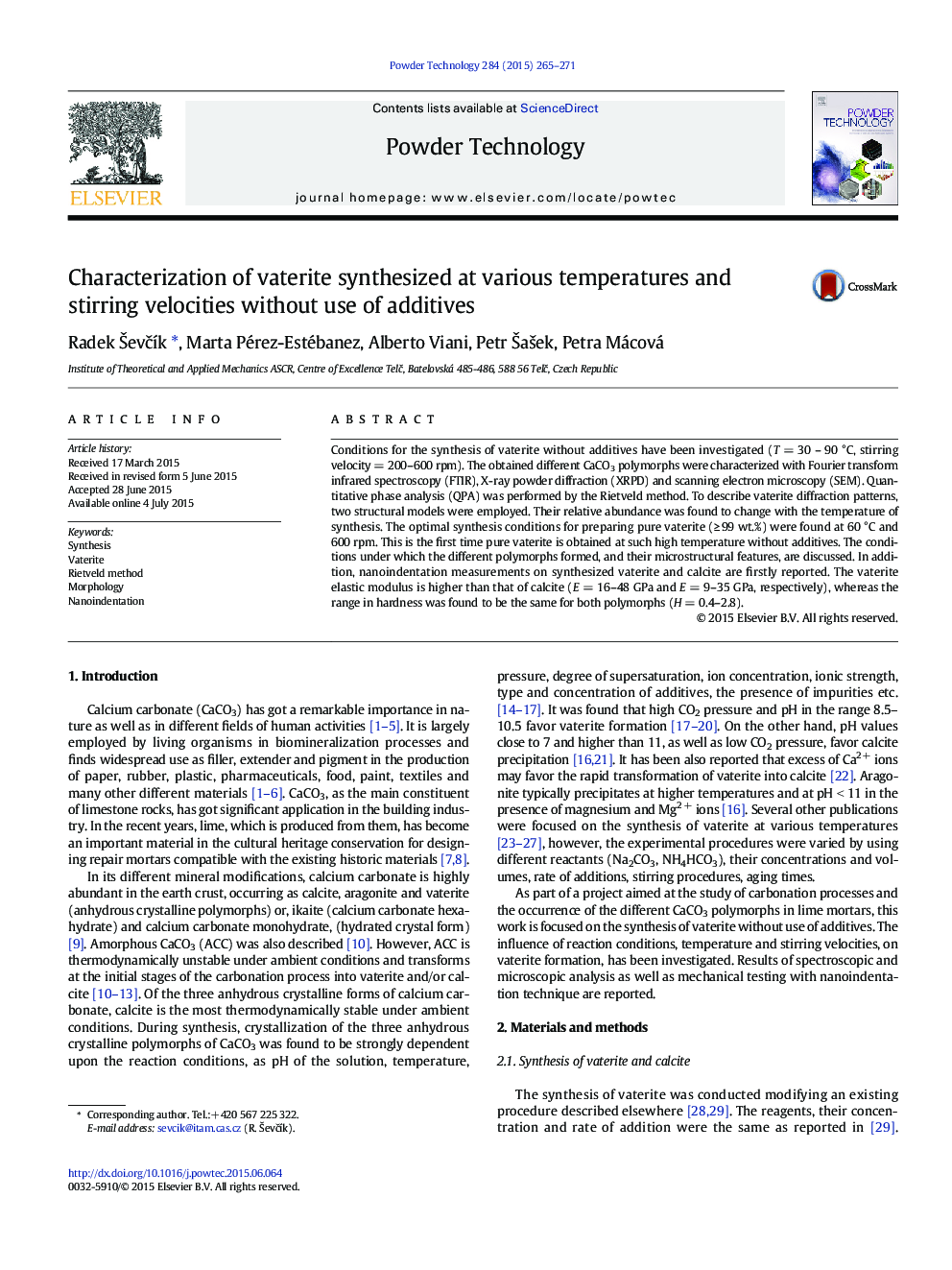| کد مقاله | کد نشریه | سال انتشار | مقاله انگلیسی | نسخه تمام متن |
|---|---|---|---|---|
| 235350 | 465634 | 2015 | 7 صفحه PDF | دانلود رایگان |
• Conditions for the synthesis of vaterite without additives have been investigated.
• To describe vaterite diffraction patterns, two structural models were employed.
• Pure vaterite (≥ 99 wt.%) was obtained at 60 °C and 600 rpm.
• Conditions of CaCO3 polymorphs formation and their microstructure are discussed.
• Nanoindentation measurements were performed on synthesized vaterite and calcite.
Conditions for the synthesis of vaterite without additives have been investigated (T = 30 – 90 °C, stirring velocity = 200–600 rpm). The obtained different CaCO3 polymorphs were characterized with Fourier transform infrared spectroscopy (FTIR), X-ray powder diffraction (XRPD) and scanning electron microscopy (SEM). Quantitative phase analysis (QPA) was performed by the Rietveld method. To describe vaterite diffraction patterns, two structural models were employed. Their relative abundance was found to change with the temperature of synthesis. The optimal synthesis conditions for preparing pure vaterite (≥ 99 wt.%) were found at 60 °C and 600 rpm. This is the first time pure vaterite is obtained at such high temperature without additives. The conditions under which the different polymorphs formed, and their microstructural features, are discussed. In addition, nanoindentation measurements on synthesized vaterite and calcite are firstly reported. The vaterite elastic modulus is higher than that of calcite (E = 16–48 GPa and E = 9–35 GPa, respectively), whereas the range in hardness was found to be the same for both polymorphs (H = 0.4–2.8).
Figure optionsDownload as PowerPoint slide
Journal: Powder Technology - Volume 284, November 2015, Pages 265–271
